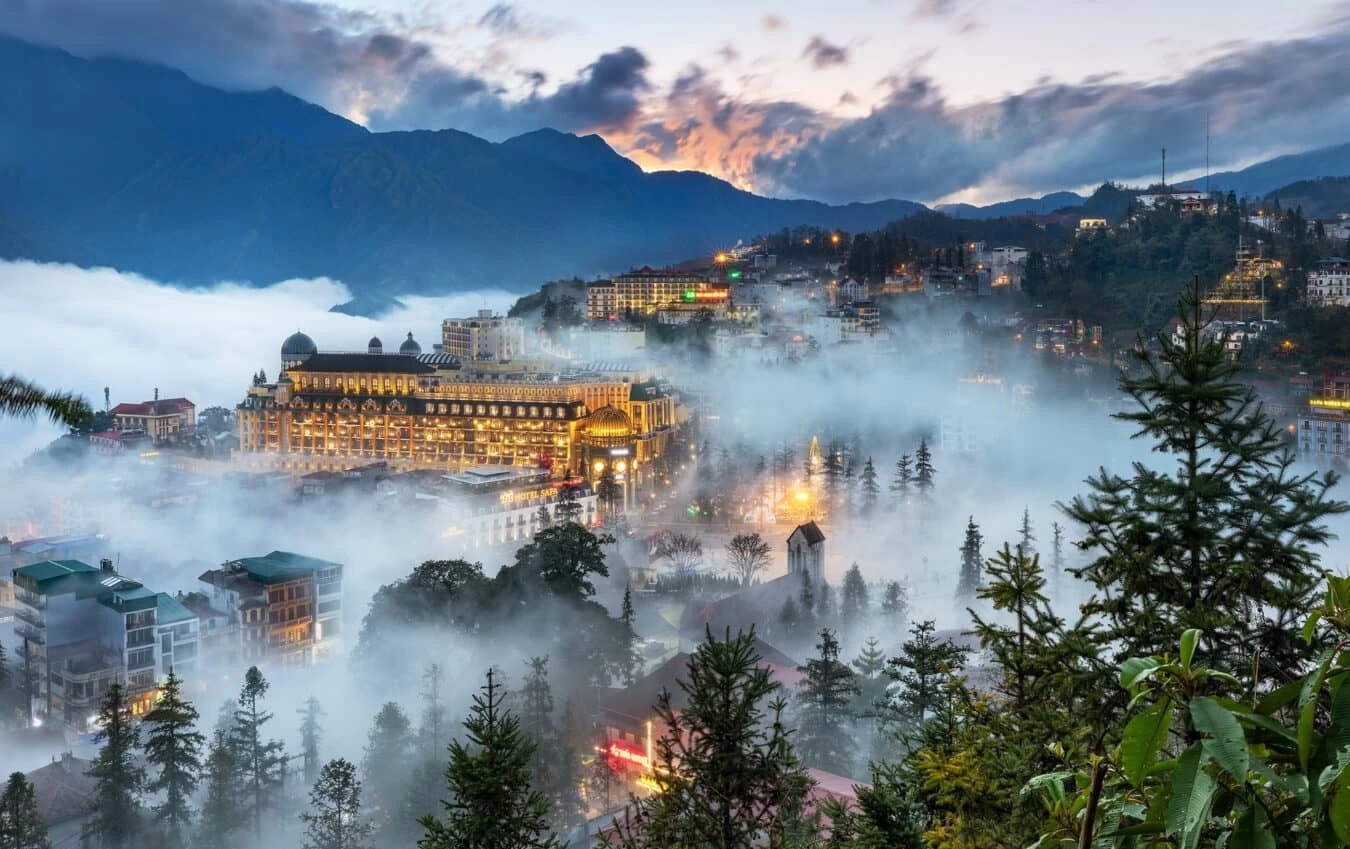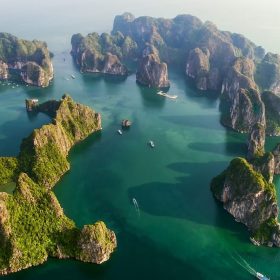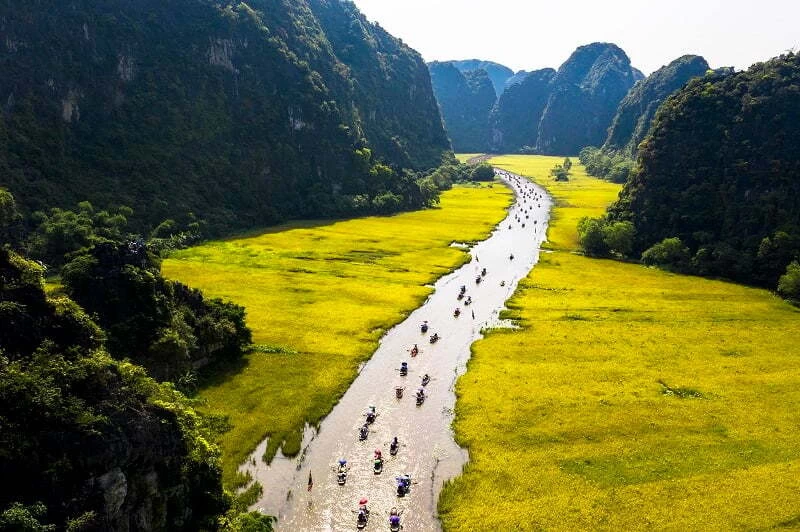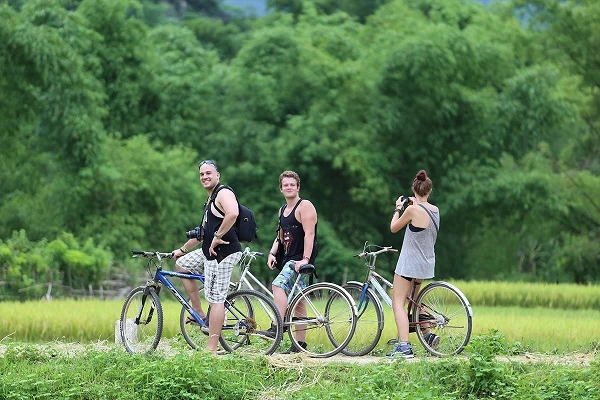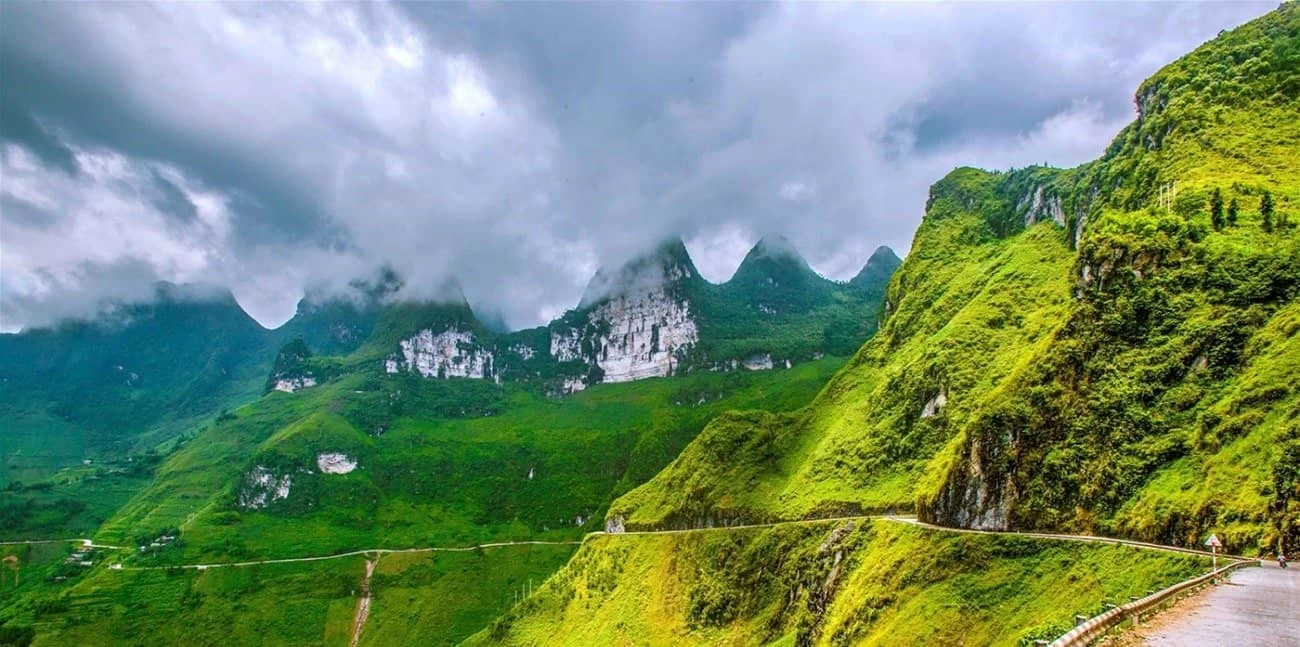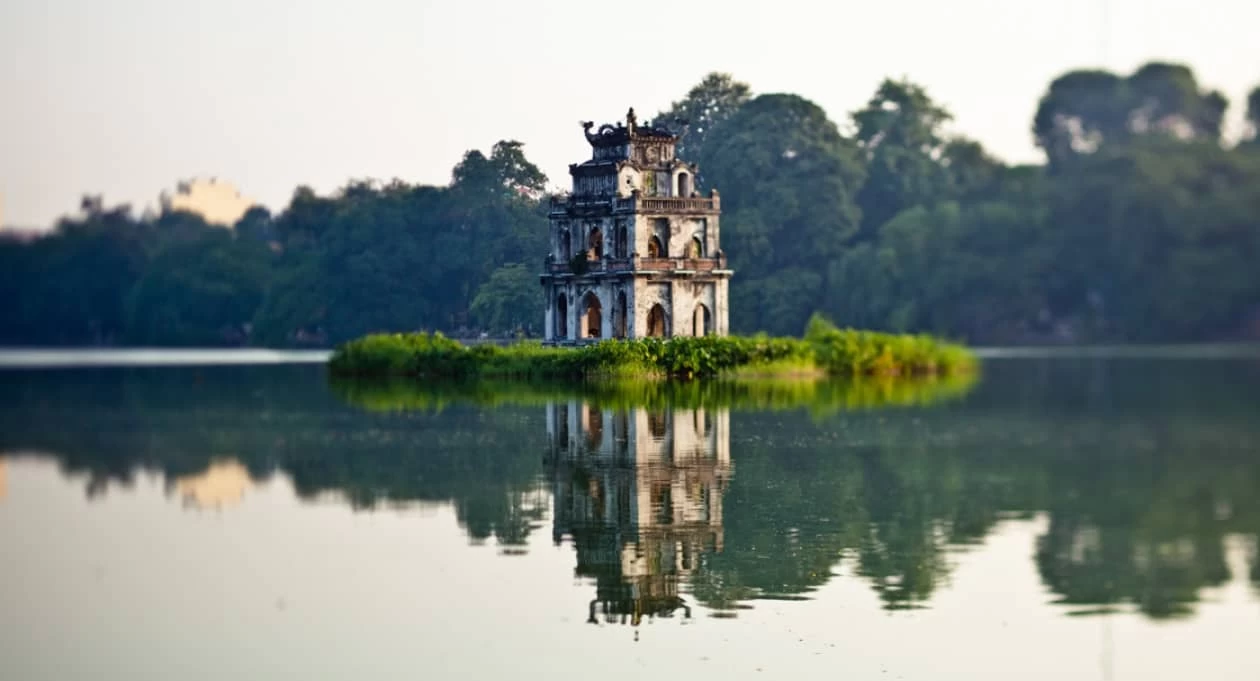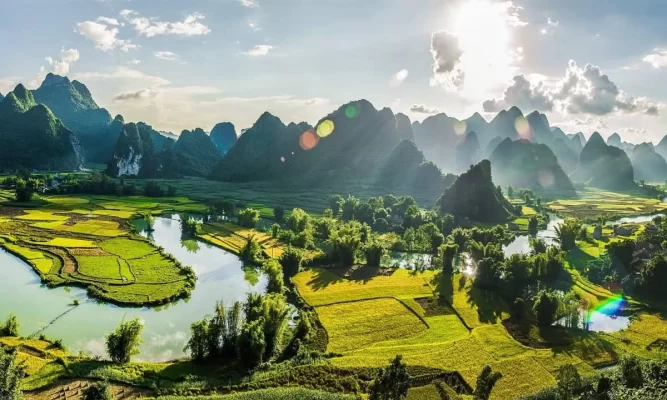
The beauty of Cao Bang
As befits its moniker, “the land of fairy tales,” Cao Bang reveals itself to tourists as a huge region full of lyrical locales and enchanting scenery gifted by the grace of nature. Every season in Cao Bang has a distinct charm of its own. Visitors may always feel the charm of Cao Bang and learn something new about this area, no matter when they visit.
I. Introduction to Cao Bang
1. Overview of Cao Bang
Cao Bang is a stunning province located in the far northern region of Vietnam, bordering China. Known for its untouched natural beauty, the province features lush forests, dramatic limestone karsts, cascading waterfalls, and winding rivers, making it one of Vietnam’s most scenic and less-explored destinations. It is situated approximately 300 kilometers from Hanoi, and its remote location has allowed Cao Bang to preserve much of its natural landscape and cultural heritage.
This province is also home to numerous ethnic minority communities, including the Tay, Nung, and Dao, each with its own rich customs, traditions, and handicrafts. The unique combination of pristine nature and cultural diversity offers an authentic experience for visitors looking to escape the well-trodden tourist routes and immerse themselves in Vietnam’s northern highlands.
2. Highlights of Cao Bang
Cao Bang is celebrated for its majestic natural landscapes, including the renowned Ban Gioc Waterfall, one of Southeast Asia’s largest and most impressive waterfalls. Ban Gioc, straddling the border between Vietnam and China, is a prime example of the province’s dramatic scenery, where turquoise waters plunge from great heights amidst a backdrop of towering limestone mountains.
Another highlight is the Non Nuoc Cao Bang UNESCO Global Geopark, a vast area covering over 3,000 square kilometers that showcases geological wonders, ancient fossils, and unique rock formations, all representing over 500 million years of Earth’s history.
II. How to Get to Cao Bang
To travel to Cao Bang province in Vietnam, you can utilize public transportation or your own vehicle. Here are some common means of transportation and their details:
- Car: If you have a personal vehicle, you can drive from Hanoi or nearby cities via National Route 3 or National Route 1B. This journey typically takes around 6–7 hours, depending on traffic conditions and driving speed.
- Bus: Several bus companies offer services from Hanoi to Cao Bang. Tickets can be booked at major bus stations, such as My Dinh Bus Station and Gia Lam Bus Station. The journey usually takes from 7 to 8 hours.
- Train: Trains are another mode of transportation, but they may take longer compared to cars or buses. Cao Bang station is approximately 300 km from Hanoi, and the journey can take around 8–10 hours.
III. Cao Bang People
Every ethnic group living in Cao Bang possesses its own unique cultural heritage, which is prominently displayed in their attire, festivals, beliefs, etc. These intangible cultural values are cherished and promoted by the local people.
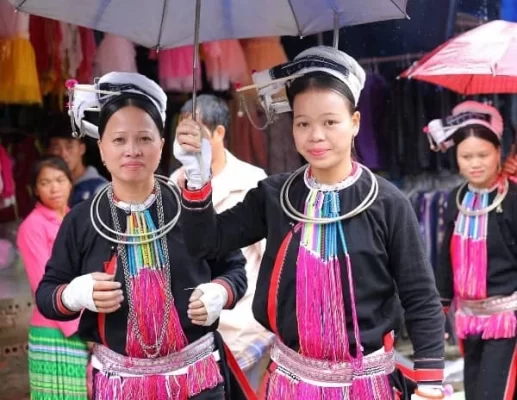
Ethnic minorities in Cao Bang
Cao Bang People belong to various ethnic groups, such as the Kinh, Tay, Nung, H’Mong, Dao, etc. This ethnic diversity creates a multicultural community, enriching the cultural, traditional, and lifestyle aspects with diversity and uniqueness. Cao Bang People often exhibit pride in their history and culture. Traditional festivals and historical sites serve as important sources of inspiration, and the locals actively participate in preserving and transmitting these values to future generations.
The admirable qualities of the people reflect the rich and diverse cultural mosaic of the ethnic community in Cao Bang. This is a significant testament to the interplay and mutual influence of cultures on individuals. The essence of traditional culture and the character of the people are particularly important factors in preserving indigenous cultural values and developing community tourism in the current era.
IV. Diversity of Cao Bang Culture
Cao Bang is regarded as the cradle of culture in the northern region of Vietnam. Many brotherly ethnic groups have coexisted and bonded for generations, contributing to the rich and diverse yet unified cultural foundation. This is a land where numerous linguistic and ethnic groups converge, such as the Tay, Nung, Mong, Dao, Lo Lo, and San Chi, each with its own language, script, and cultural identity.
1. Ethnic Music
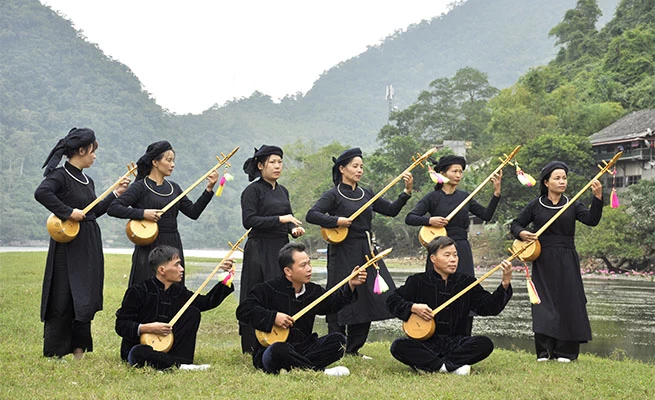
Ethnic Music in Cao bang
The culture of Cao Bang becomes distinctive due to its unique ethnic music, which is a delicate highlight of this cultural heritage. Folk songs, including the unique melodies of the Tay, Nung, and Dao people, are conveyed through enchanting songs and traditional musical instruments. You can enjoy traditional music at local festivals, where lively dances and captivating melodies create a vibrant atmosphere and foster community cohesion.
2. Culinary Specialties
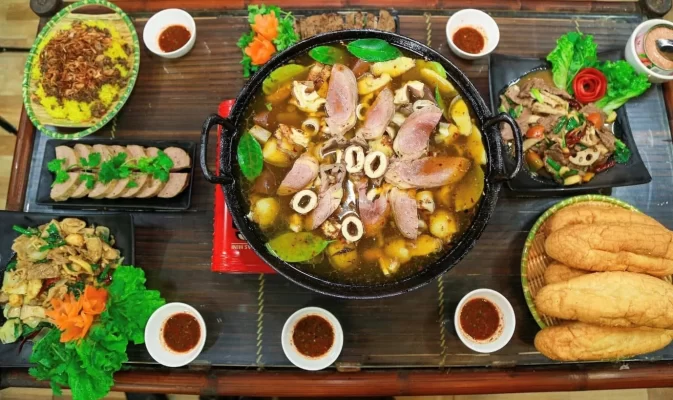
Thang Co – Cao Bang specialty
Exploring Cao Bang’s culture would be incomplete without indulging in its rich and unique culinary specialties. Here, you have the opportunity to savor traditional dishes such as “river crab hotpot,” “bamboo tube rice,” or “thang co,” all infused with the distinctive flavors of the region. Family dining experiences with friends will be unforgettable, as you not only enjoy delicious food but also delve into stories of history and culture.
Maybe you will be interested: Cao Bang Cuisine: The Best of 10 must-try dishes
3. Festivals and Rituals
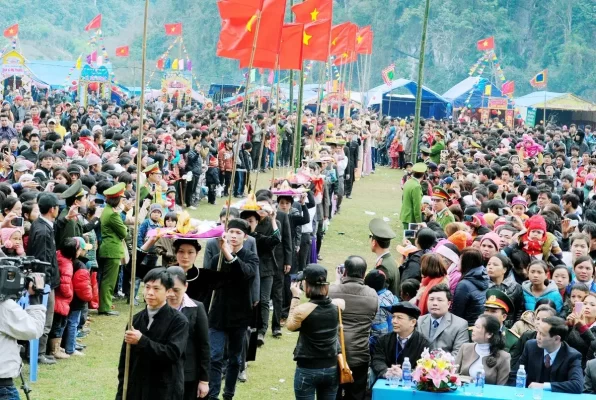
Long Tong Festival in Cao Bang
Cao Bang is renowned for its traditional festivals and spiritual rituals. The Long Tong festival, held in October every year, is a time for people to come together to pray for good luck and abundant harvests. Additionally, other festivals like the Lunar New Year or the Cloud Bridge festival are significant events, offering unique decorative atmospheres and memorable commemorations.
See more: The Long Tong Festival
4. Ancient Architecture
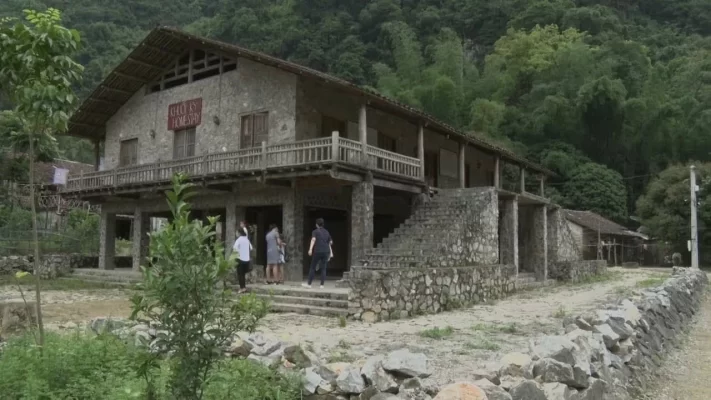
House made of stone
The architecture of Cao Bang is also an integral part of its unique culture. Temples, pagodas, churches, and traditional architectural structures built centuries ago retain the meticulous beauty and elegance of ethnic culture.
Houses with tiled or wooden roofs, nestled against the mountainsides, attract the attention of visitors. These are homes imbued with the distinct cultural characteristics of the Mong, Dao, Tay, and Nung people, preserving the unique cultural values of their way of life.
V. Best Time to Visit Cao Bang
Although Cao Bang is blessed with numerous breathtaking landscapes, not every time is ideal for visiting and fully enjoying the beauty of its vast mountains and forests. This is because the climate in Cao Bang is divided into two seasons: the rainy season lasting from April to September and the dry season from October to March of the following year. However, travelers who come to this “green gem” all agree that each season in Cao Bang has its own unique beauty.
But to fully capture the beauty of Cao Bang, the ideal time for tourism is from August to September each year. During this period, the weather is pleasantly cool, with less rain, making it convenient for transportation and exploration of all the famous landmarks and landscapes. During this time, the famous waterfalls in Cao Bang also “spring to life” with abundant water, creating a magnificent scenery. This makes it easy for you to capture virtual check-in photos at one of the most beautiful waterfalls in Vietnam.
Furthermore, if you want to experience the season of blooming flowers overflowing in the mountains and forests, you can visit Cao Bang in the last two months of the year. During this time, buckwheat flowers and wild sunflowers bloom abundantly, creating a vibrant painting of the mountainous region. If you want to experience the cold of winter and marvel at the image of pristine white snow covering the sky, you can visit Phia Oac National Park here in the winter.
VI. Cao Bang Attractions
1. Ban Gioc Waterfall
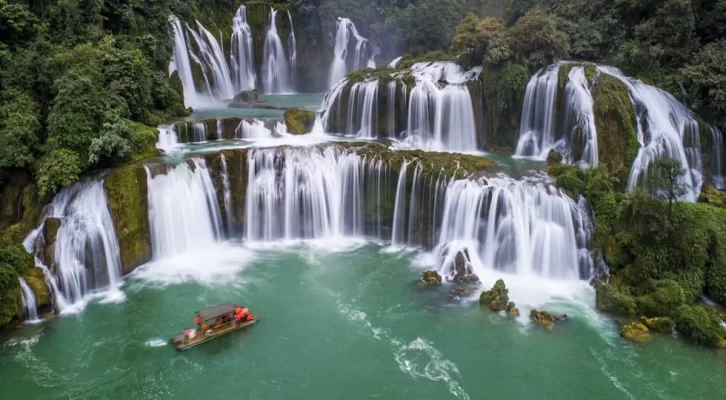
Ban Gioc Waterfall
Ban Gioc Waterfall has been listed as one of the most beautiful waterfalls in Southeast Asia and is also among the top four largest waterfalls in the world. Situated at the border between China and Vietnam, Ban Gioc resembles a pristine white silk strip amidst the Cao Bang mountains, cascading into the emerald Quay Son River.
Ban Gioc Waterfall is about 100km away from the center of Cao Bang, accessible by bus or motorbike. The ideal time to visit is from August to November. The period from August to September marks the end of the rainy season in Cao Bang, resulting in abundant water flow at the waterfall and stunningly clear water. Meanwhile, October is the harvest season, and November witnesses the blooming of wild sunflowers here.
Let’s discover The charming and dreamy Cao Bang 3D2N!
2. Nguom Ngao Cave
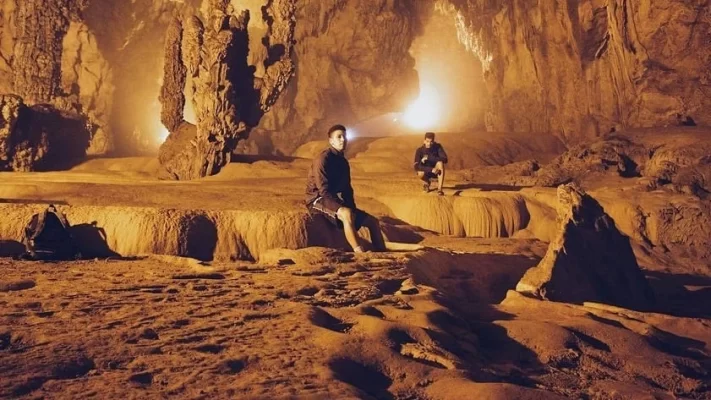
Nguom Ngao Cave
Although it has existed for over 400 million years, Nguom Ngao Cave was only opened for tourism in 1996. In the Tay language, “Nguom Ngao” means “tiger cave.” Nestled in the mountainous area of Trung Khanh district, this limestone cave stretches over 2,100 meters in length.
Do not miss: Exploring Cao Bang 2D1N
3. Khuoi Ky Stone Village
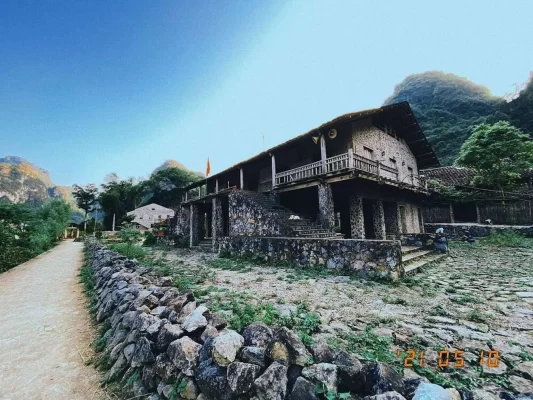
Khuoi Ky Stone Village
Located between the two tourist destinations of Ban Gioc Waterfall and Nguom Ngao Cave, Khuoi Ky Stone Village intrigues many visitors with its unique stone worship rituals and houses entirely made of stone, adding to the beauty of Cao Bang.
There are 14 stone houses spread over an area of about 10,000 square meters. With their location against the mountainside and facing the stream, the stone houses in Khuoi Ky Village exude a rare, serene beauty.
4. Bao Lac Market
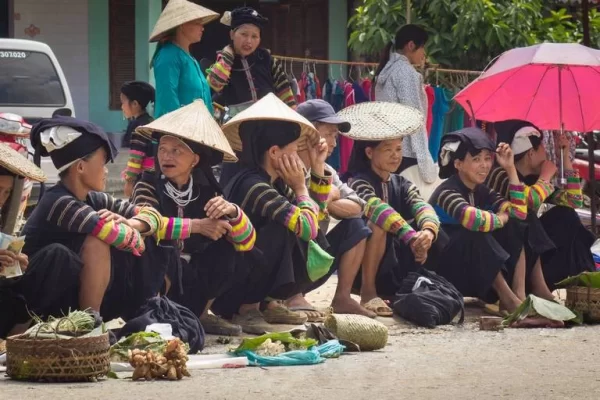
Bao Lac Market
Bao Lac is a highland district of Cao Bang province, situated along the picturesque Gam River and Neo River. The market in Bao Lac town offers a glimpse into the communal life of the local ethnic communities, creating a unique cultural feature and providing interesting experiences for visitors from near and far. The market takes place on the 5th, 10th, 15th, 20th, 25th, and 30th days of the lunar month.
5. Pac Bo Historical Site
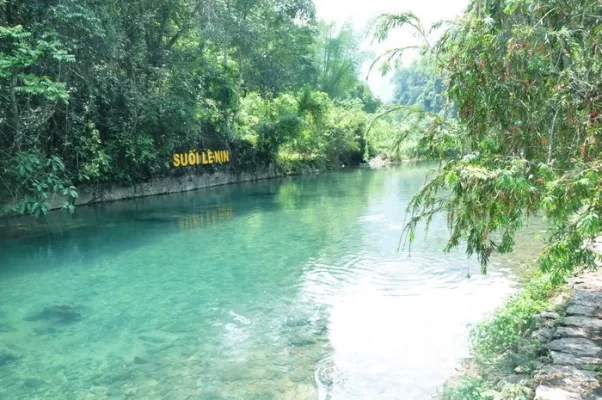
Pac Bo Historical Site
When mentioning check-in destinations in Cao Bang, one cannot overlook the Pac Bo historical site. This is not only a historically significant location but also boasts stunning natural landscapes reminiscent of a fairyland.
With an area of over 500 hectares, this site is divided into various clusters of historical relics associated with Ho Chi Minh’s daily activities. Among them, Coc Bo Cave, Lenin Stream, Milestone 108, and Gooc Mu rice fields are the most famous spots.
6. Ma Phuc Pass
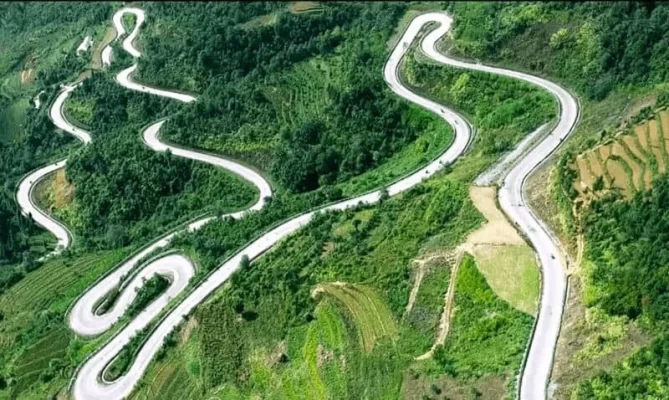
Conquer Ma Phuc Pass
Ma Phuc Pass is another must-visit destination to admire the scenery and experience the fresh air when visiting Cao Bang. Located in Quoc Toan commune, Tra Linh district, Cao Bang province, Ma Phuc Pass is an ideal destination for those who love challenges and conquests.
Crossing the Ma Phuc Pass, travelers cannot help but marvel at the incredibly majestic and poetic natural landscape, which is both grand and simple with its rugged, undulating mountains.
Each season, the Ma Phuc Pass displays its own beauty. In spring, visitors can admire the vast expanse of green fields of corn and lush rice paddies. In late autumn and early winter, tourists can enjoy the simple beauty of triangular flower patches.
A special feature of visiting the Ma Phuc Pass is the opportunity to experience the unique characteristics of the rural market and savor the local specialties. One of the most prominent specialties at this market, always favored by tourists as gifts, is beef.
7. Me Pia Pass
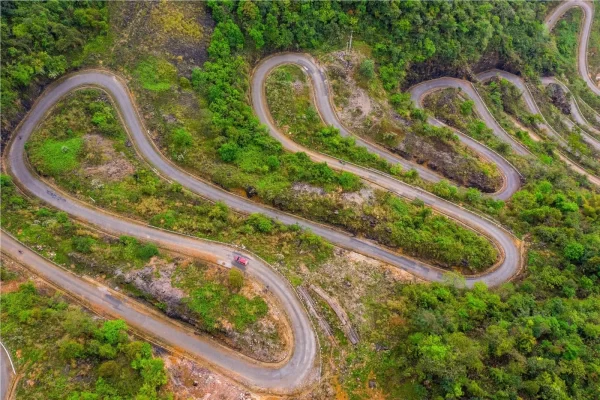
The majestic beauty of Me Pia Pass
Me Pia Pass is one of the most famous mountain passes in Cao Bang province, in the Northwest region of Vietnam. Me Pia Pass is located on National Highway 4A, with a total length of only 2.5km, but due to its steep slope, the road twists like a silk ribbon in the wind. The entire pass is located in Xuan Truong commune, connecting this commune with the center of Bao Lac district, which shares a border with China.
Click here Discover Northern Vietnam: Lost in Wonderland 5D4N
VII. Activities and Experiences in Cao Bang
1. Hiking, Trekking, and Exploring Nature
Cao Bang’s rugged landscapes and diverse ecosystems make it a fantastic destination for trekking enthusiasts. Here are some suggested trekking routes to fully immerse in the region’s natural beauty:
- Ban Gioc Waterfall Trek: This iconic trek leads visitors through stunning limestone mountains and valleys to Ban Gioc Waterfall, the largest waterfall in Vietnam and one of the most breathtaking in Southeast Asia. Along the way, travelers pass by local villages, rice terraces, and lush forests, providing perfect photo opportunities and a chance to experience the region’s landscapes up close.
- Hidden Trails and Lesser-Known Paths: For those seeking more secluded experiences, Cao Bang offers several less-traveled trails. These paths lead to pristine natural areas where travelers can encounter untouched forests, remote caves, and traditional villages. One such trail is in the Non Nuoc Cao Bang Geopark, a UNESCO World Heritage Site. This route includes stops at ancient rock formations, streams, and viewpoints showcasing some of the region’s most striking and serene scenery.
- Trekking Tips: Due to the terrain, some trails may require a moderate fitness level. It’s recommended to trek with local guides who can navigate the paths and share insights into the local flora, fauna, and cultural landmarks along the way.
2. Cultural Immersion and Local Craft Experiences
Cao Bang is home to various ethnic minority groups, each with a rich heritage and unique cultural practices. Visitors can experience these vibrant cultures by engaging with the communities and participating in local craft traditions.
- Traditional Weaving Villages: Cao Bang’s ethnic communities, particularly the Tay and Nung people, are known for their skillful weaving techniques. Many villages welcome visitors to observe and even try their hand at traditional weaving, producing beautiful fabrics using natural dyes and intricate patterns. Participating in this activity offers insights into the importance of these crafts in local life, where each woven piece carries cultural and symbolic meaning.
- Papermaking in Phuc Sen Village: Located not far from Cao Bang city, Phuc Sen village is famous for its traditional papermaking and blacksmithing. Here, artisans create Do paper, a type of traditional Vietnamese paper made from the bark of the Do tree. This paper has been used for centuries in calligraphy, folk art, and religious offerings. Visitors can learn about each step of the process, from harvesting the tree bark to producing the final paper, gaining a deeper understanding of the craft’s historical significance.
- Staying with Local Families (Homestay Experiences): For a more immersive cultural experience, travelers can stay with local families in a homestay setting. Many homestays offer authentic meals and the chance to join daily activities, like farming, cooking, or making handicrafts. This type of accommodation provides a unique perspective on local life and fosters meaningful connections with the people of Cao Bang.
In conclsion, visiting Cao Bang is not just an adventure to explore natural beauty but also an opportunity to immerse yourself in the unique, captivating, and diverse culture of the ethnic communities here. These unique experiences will make your journey meaningful and unforgettable.



